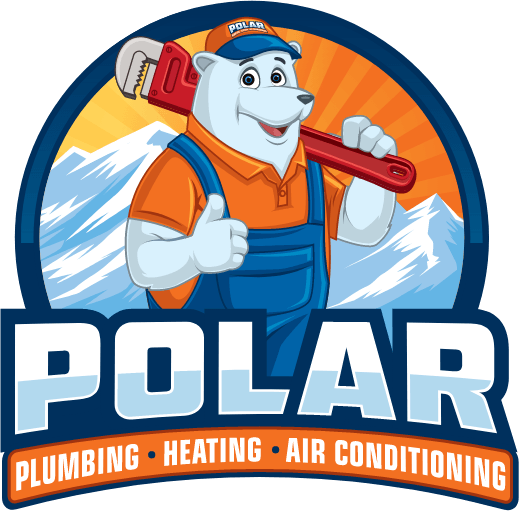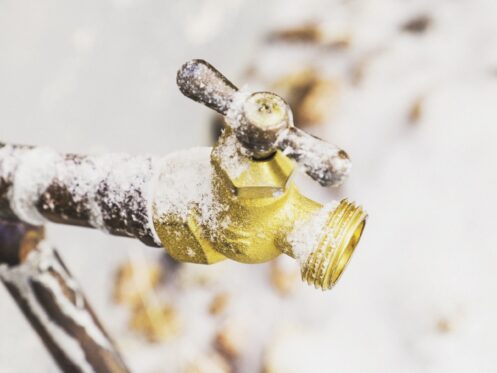Long, cold winters are common here in Newburgh, NY. It gets so cold, in fact, that keeping yourself warm takes some serious effort. The same is true of the pipes that run through your home. Unfortunately, your pipes won’t warn you when they’re close to freezing. Your first warning may come in the form of a burst pipe and a flood, which means it’s already too late and you need to call a plumber for pipe repair. To keep that from happening, you can take some preventative measures. Here are seven of the most effective tactics.
1. Prepare Your Hose Bibs
The closer your home’s plumbing is to the outside air, the more vulnerable it is to freezing. Since they’re on the exterior of your home, your hose bibs are especially frost-prone. They’re the first part of your plumbing system you should prepare for the winter. You must first find each hose bib’s shutoff valve inside your home to do it. They should be within a few feet of where each hose bib pipe passes through the exterior wall. Once you find them, turn them off. Then, open each hose bib to allow the remaining water to drain. You can close the hose bibs when no water remains.
Next, you will need insulating covers for each of your hose bibs. You can find them in any home improvement or hardware store. They will look like small foam boxes with plastic straps protruding from their center. You will need one for each hose bib. To install the covers, grasp the plastic strap loop inside the cover and slip it over your hose bib. As you do, ensure the strap doesn’t get snagged around the bib’s shutoff valve. When done, pull the other end of the strap from outside the cover. That will draw the cover over the hose bib and against your wall. Use the included clip to secure the cover in place.
2. Seal Air Leaks
Keeping cold air out of your home is essential to protect your pipes from freezing. To do it, you should inspect the exterior of your home for gaps and cracks that may let cold air in. If you find any small cracks, you can use all-weather caulking to seal them. If there are any large gaps, caulking won’t be enough. For those, try using expanding foam sealant. You can then repeat the process inside your home, sealing any gaps you find. It’s also wise to install weatherstripping around your windows and doors. Pay extra attention to the windows in your kitchen and bathrooms. They’re close enough to plumbing fixtures to make an air leak a significant threat.
3. Insulate Vulnerable Pipes
Most of your home’s plumbing gains protection from the warmer indoor temperatures created by your heating system. However, most homes also have pipes that run through unheated spaces. Those pipes are the second most vulnerable spots you must address. First, visually inspect your basement, attic, and crawl spaces to see what pipes run through them. As you do, take note of any insulation on those pipes, as well as its condition.
If you find any pipes with damaged insulation, you must repair it. The simplest way is to remove the damaged insulation section using a utility knife. Be careful not to damage your pipes by applying too much pressure. Then, purchase new pipe insulation and cut it to fit the missing insulation section. The easiest type of pipe insulation to work with is a foam insulation sleeve. They feature adhesive strips to seal them after slipping over your pipe. You can use the same type of insulation on any other uninsulated pipe sections you find.
4. Use Heat Tape
If insulating your vulnerable pipes is too big a project, there’s another alternative. You could have a plumber install heat tape on your pipes instead. Heat tape is a proactive freezing prevention system. As its name suggests, it consists of a long strip of tape with electrical wires inside it. Those wires function as electric resistance heaters to warm your pipes when the surrounding temperature drops. Heat tape systems feature a plug-in controller that detects the air temperature near your pipes. It also lets you set a minimum temperature threshold to activate the system.
Heat tape also reduces the odds of frozen pipes throughout your home. As it warms the pipes in its installation location, it also raises the temperature of the water passing through it. That provides additional protection for the rest of your home’s plumbing.
5. Preemptively Program Your Thermostat
Reprogramming your thermostat is another way to prevent frozen pipes inside your home. Ideally, you should set it so that the temperature inside your home never falls below 50 degrees Fahrenheit. Doing so should protect all the pipes running in the heated parts of your home. It’s important to remember that you must leave that minimum set even when you’re not home.
6. Open Your Under-Sink Cabinets
Another way you can protect vulnerable parts of your plumbing is by opening your under-sink cabinet doors. You may not know it, but the temperature under your home’s sinks can be as much as 20 degrees colder. There are two reasons for that. One is that closed cabinet doors prevent heated air from circulating under your sinks. The other is that cold water in your plumbing absorbs heat from the surrounding space. Opening your cabinet doors when the outside temperature falls below 25 degrees can help heated air reach your vulnerable pipes.
7. Let a Faucet Drip
One of the problems with the preceding tips is that they assume your home has working heat and electricity. But what if there’s a power outage on a cold night? In that case, there’s one last thing you can do to try and prevent frozen pipes. It’s to find the faucet in your home furthest from your main water supply and let it drip. Doing that accomplishes two things. First, it keeps water continuously flowing through your home’s supply lines. Flowing water will delay freezing somewhat, compared to still water. Second, it provides a place for air pressure to escape your plumbing. When a pipe freezes, an air pressure buildup may do more damage than the ice itself. Leaving your most distant faucet dripping helps protect all your home’s water supply lines simultaneously.
Your Plumbing Protection Specialists
Polar Plumbing, Heating & Air Conditioning is the local plumber Newburgh homeowners turn to for expert advice and quality service. We offer comprehensive plumbing services and understand the unique plumbing challenges our winters pose. We can also handle your home’s HVAC needs, including working with the latest heat pump technology. Plus, we offer complete guarantees on all the systems we install and on our labor. Our team of expert HVAC technicians and plumbers have the latest training and decades of experience. They’ll treat you and your home with respect while they work. We can even provide financing options on approved credit for major comfort purchases. If you need help preventing your plumbing from freezing in Newburgh, call Polar Plumbing, Heating & Air Conditioning immediately!

